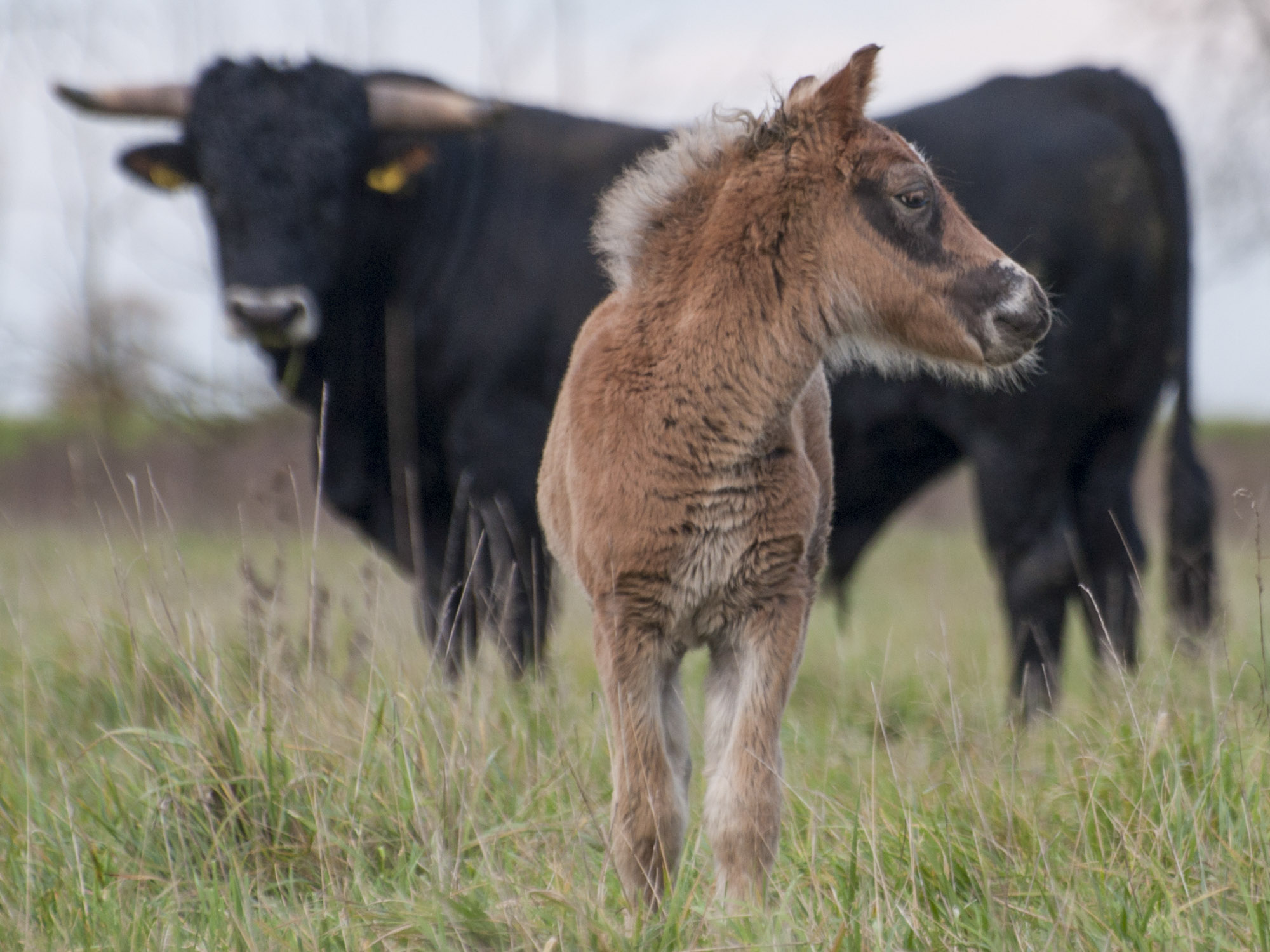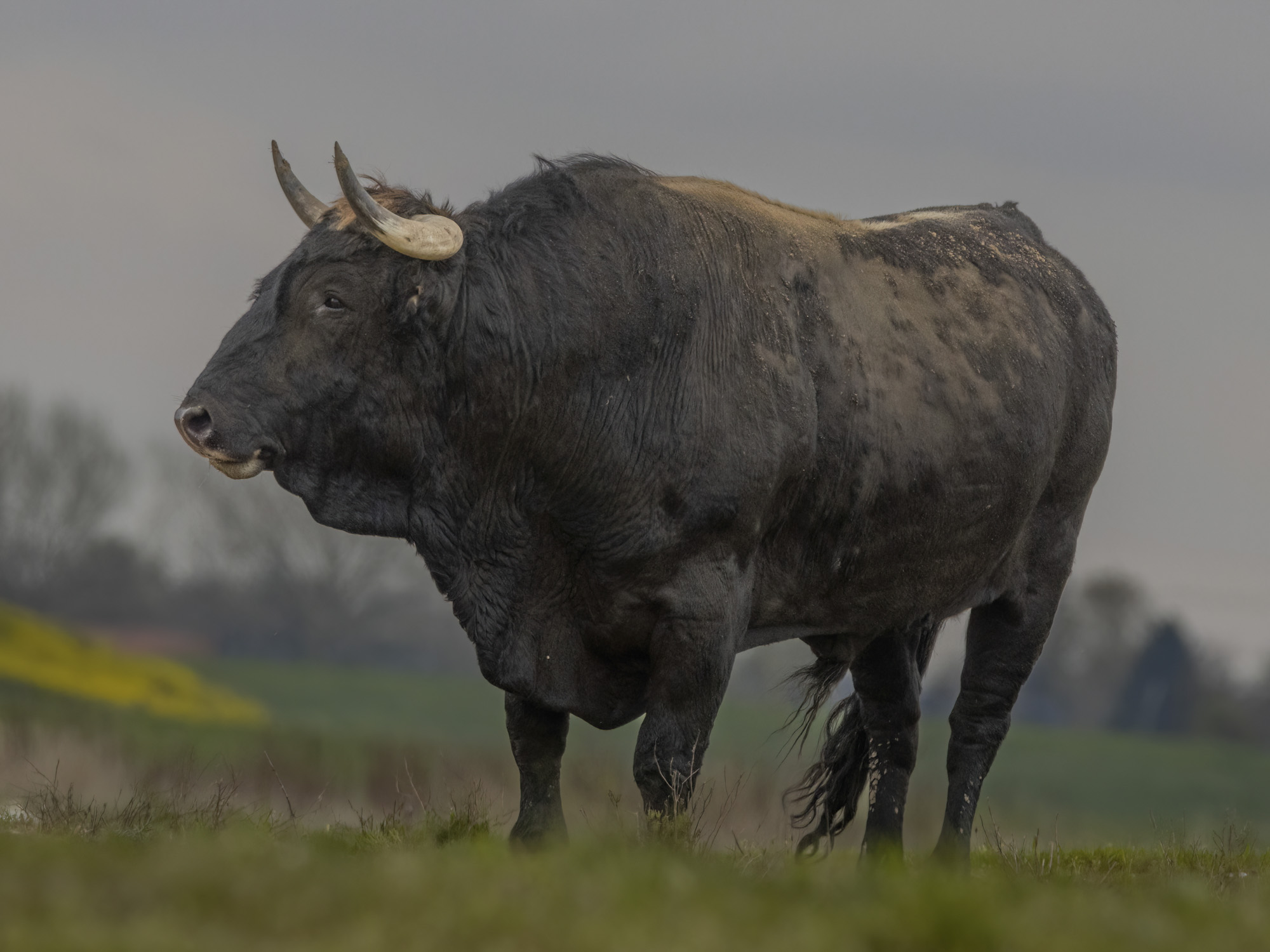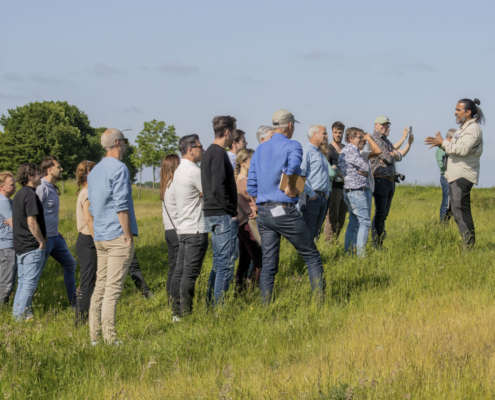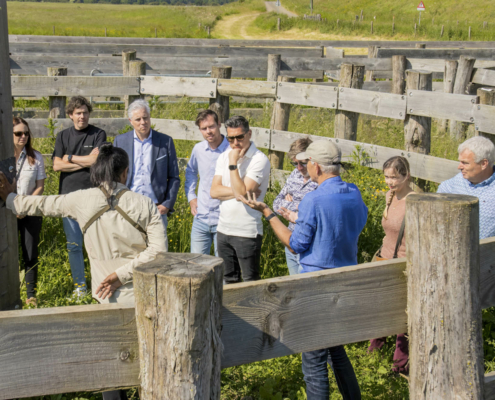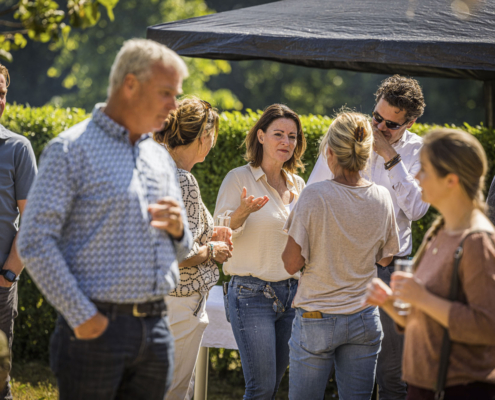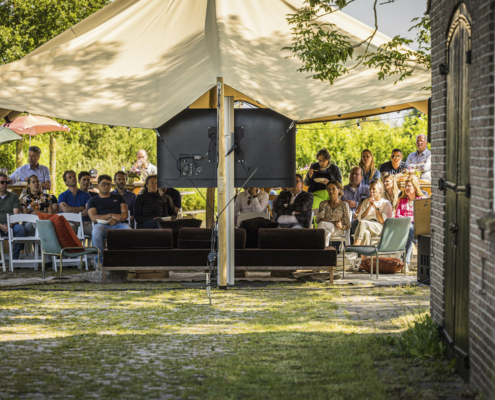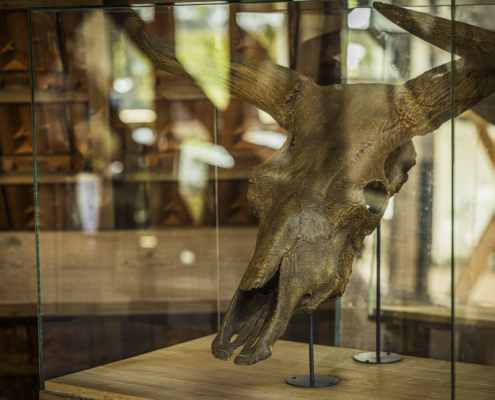Size matters
Our years of experience with grazing have yielded a simple basic rule: size matters. The size of herds, the size of individual animals and the size of their horns in vast landscapes mean that their impact is greater than in the case of smaller herds in smaller areas or with polled (hornless) breeds. We see that our adult Tauros bulls – weighing up to 1,200 kg – go through a forest like a bulldozer, creating and maintaining much more openness than, for example, a much smaller galloway.
The size of the horns also matters. Bulls and cows use them not only as a means of communication, but also as tools. And not just for themselves: we regularly see bulls bending a young tree with their massive horns so that the rest of the herd can benefit from the juicy leaves that they otherwise cannot reach.
This also applies to herd size. Larger herds move through the landscape like a mega vacuum cleaner, with a high impact on the vegetation, which is then given the opportunity to recover. But this is only possible in larger landscapes in which herds can actually display their natural migratory behavior.
Size matters also when large predators are in play. Wolves – even if there are dozens of them, as in Croatia where a herd of Taurus grazes on the Likaplains – keep a respectable distance as the herds form a large circle at night with the horns pointing outwards and the vulnerable animals in the middle. We see mutualism occurring there: other species that seek the protection of that ring of horns, such as horses, but also rowdeer.

